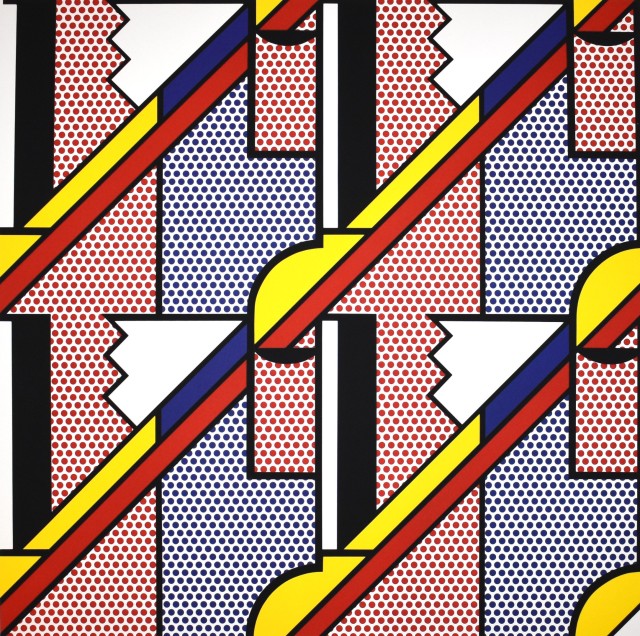From 1957 to 1960 Lichtenstein obtained a teaching position at the State University of New York, Oswego. By then he had begun to include loosely drawn cartoon characters in his increasingly abstract canvases. From 1960 to 1963 he lived in New Jersey while teaching at Douglass Residential College, a division of Rutgers University in New Brunswick, New Jersey. He met artists such as Jim Dine, Allan Kaprow, Claes Oldenburg, Lucas Samaras, George Segal, and Robert Whitman, all of whom were experimenting with different kinds of art based on everyday life. In 1961 he began to make paintings consisting exclusively of comic-strip figures, and introduced his Benday-dot grounds, lettering, and balloons; he also started cropping images from advertisements. From 1964 into the next decade, he successively depicted stylized landscapes, consumer-product packaging, adaptations of paintings by famous artists, geometric elements from Art Deco design (in the Modern series), parodies of the Abstract Expressionists' style (in the Brushstrokes series), and explosions. They all underlined the contradictions of representing three dimensions on a flat surface.
In the early 1970s he explored this formal question further with his abstract Mirrors and Entablatures series. From 1974 through the 1980s, he probed another long-standing issue: the concept of artistic style. All his series of works played with the characteristics of well-known 20th-century art movements. Lichtenstein continued to question the role of style in consumer culture in his 1990s series Interiors, which included images of his own works as decorative elements. In his attempt to fully grasp and expose how the forms, materials, and methods of production have shaped the images of Western society, the artist also explored other mediums such as polychromatic ceramic, aluminum, brass, and serigraphs.
Beginning in 1962, the Leo Castelli Gallery, New York, held regular exhibitions of the artist's work. Lichtenstein participated in the Venice Biennale in 1966, and was honored with solo exhibitions in 1967 and 1968 at the Pasadena Art Museum and the Solomon R. Guggenheim Museum, New York, respectively. The artist was the subject of a major retrospective at the Guggenheim in 1994, three years before his death on September 30, 1997.
